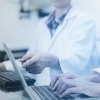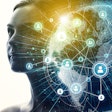People at high risk of atherosclerotic cardiovascular disease (ASCVD) may benefit most from strategies that reduce their exposure to air pollution, according to research presented at the Society of Cardiovascular Computed Tomography (SCCT) 2024 meeting in Washington, DC.
The prognostic evaluation and risk stratification study led by Isabel Langenbach, MD, of Massachusetts General Hospital and Harvard Medical School in Boston concerned the smallest fine particulate matter of 2.5 micrometers (PM2.5) and smaller (30 times smaller than a strand of human hair).
Air pollution particulate matter contains microscopic solids or liquid drops that are so small they can be inhaled, according to the U.S. Environmental Protection Agency. Particles less than 10 micrometers in diameter can get deep into the lungs and possibly into the bloodstream. Particles less than 2.5 micrometers pose the greatest risk to health.
Exposure to PM2.5 significantly increases the risk of cardiovascular (CV) disease and adverse CV events, the researchers noted. However, whether the association is affected by individual ASCVD risk is unknown.
To address the knowledge gap, Langenbach and collaborators at Semmelweis University in Budapest, Hungary; Oregon Health and Science University in Portland, OR; and Duke University Medical Center in Durham, NC, investigated the effect of PM2.5 on CT-derived coronary artery disease metrics and adverse cardiovascular events across categories of ASCVD risk (low: < 7.5%; intermediate: 7.5% to 20%; high: > 20%).
The team analyzed 4,296 people ages 53 to 69 (52% women) with no prior history of coronary artery disease (CAD) across 2,395 U.S. zip codes, assessing their annual average exposure to PM2.5.
 Image courtesy of the U.S. Environmental Protection Agency.
Image courtesy of the U.S. Environmental Protection Agency.
The EPA PM2.5 threshold of ≥9.5 micrograms per cubic meter (μg/m3) indicates high exposure, and the researchers studied those with stable chest pain randomized to the CT arm of the Prospective Multicenter Imaging Study for Evaluation of Chest Pain (PROMISE) trial who had available CT images.
They used multivariable logistic and Cox regression models to compare the associations between increased PM2.5 exposure and core-lab-determined CT-derived CAD metrics and adverse CV events across ASCVD risk categories. CAD metrics included any plaque, obstructive CAD (stenosis ≥ 50%), high-risk plaque features (HRPF), high CAD burden and severity (Leaman score ≥ 5), while adverse CV events were defined as the composite of CV death, myocardial infarction, or hospitalization for unstable angina.
The study linked increased PM2.5 exposure to risk of obstructive CAD exclusively in intermediate and high ASCVD risk patients with 39% and 56% increased odds, respectively, the significantly highest risk increase attributable to PM2.5 in the high ASCVD risk category, Langenbach and colleagues reported.
Increased PM2.5 exposure was also associated with adverse CV events. Cox regression analysis revealed a 12-fold higher risk of events in people with high ASCVD risk and exposed to high PM2.5 (adjusted hazard ratio [HR] of 12.18, p = 0.001) compared to PM2.5 < 9.5μg/m3 and low ASCVD risk.
The findings reinforce the need to monitor air quality for PM2.5 fine particulate air pollutants, and reduce exposure, especially for vulnerable groups such as those at high ASCVD risk, the team concluded.




















